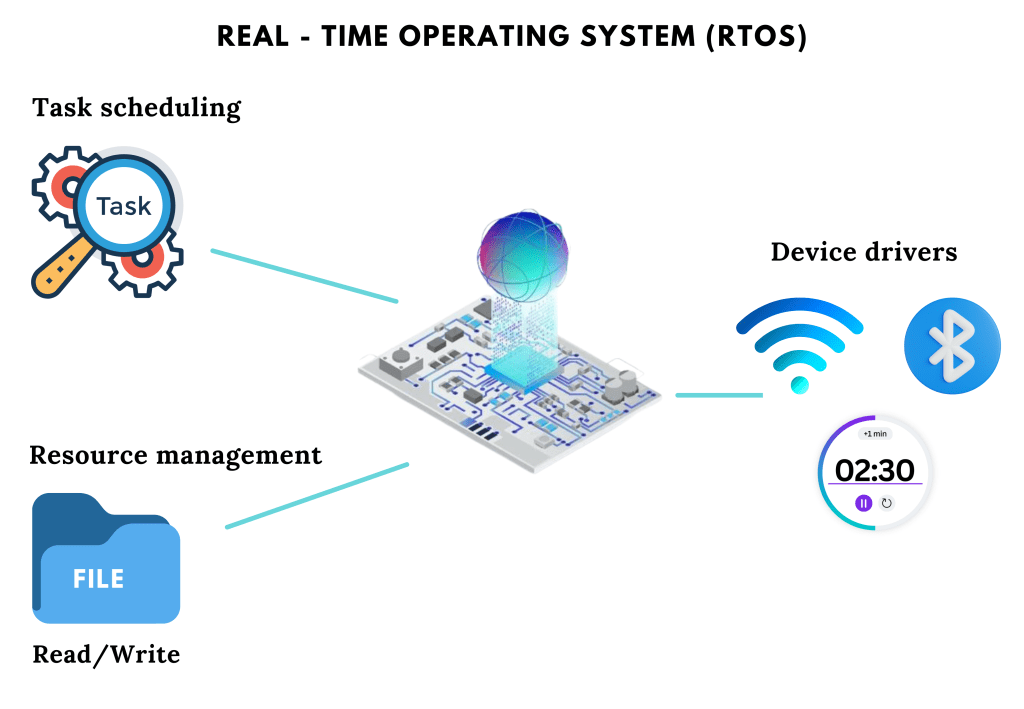A Developer’s Guide to Achieving Ultra-Long Battery Life in Monitoring Devices with ESP32’s ULP Coprocessor

Image source – https://portal.vidadesilicio.com.br/ The ESP32’s Ultra-Low Power (ULP) coprocessor presents a sophisticated avenue for developers aiming to extend battery life and reduce power consumption without sacrificing performance. This guide delves into the uses of the ULP coprocessor and outlines methods for programming it effectively. Understanding the ULP Coprocessor The ULP coprocessor in the ESP32 […]
FreeRTOS vs Embedded Linux – Which One Should I Use?

One major decision made by the embedded system architect is to choose the right operating system for the application. Two common operating systems for embedded systems are Embedded Linux and FreeRTOS. So, you may ask, which one of the two should I choose to develop my system? FreeRTOS or Linux? Which One is Better for […]
How NB-IoT is Transforming Connectivity – An Intro to NB-IoT

Introduction NB-IoT is a wireless IoT protocol that uses Low Power Wide Area Network technology and operates within licensed frequency bands. NB-IoT typically offers a communication range of up to 5 km under standard conditions. In areas with minimal interference and clear line of sight, such as rural settings, this range can extend up to […]
A Beginner’s Guide to Millimeter-Wave (mmWave) Radar Technology – Applications and Advantages

Millimeter-wave radar (or mmWave radar) is a class of radar technology that operates in the 30 GHz to 300 GHz frequency range. This offers unique advantages in applications ranging from automotive to meteorological systems. Introduction to Millimeter-Wave Radar Millimeter-wave (mmWave) radar operates on electromagnetic waves with wavelengths ranging from 1 millimeter to 10 millimeter (frequency […]
Ensuring Reliability of Safety Critical Software with MISRA

In safety-critical software systems—deployed in industries like medicine, automotive, and space—a single programming error can have dire consequences, from significant financial losses or potential loss of human life. This is where the MISRA standard comes into play. It is specifically designed for safety-critical systems, ensuring they meet stringent security and reliability requirements. The Need for […]
Solving RTOS (Real Time Operating System) Limitations with Active Objects in Embedded Systems

In embedded systems, Real-Time Operating Systems (RTOS) are designed to synchronize thread execution with specific events, often through blocking and waiting for designated occurrences. However, this approach has its drawbacks. Blocked threads become unresponsive to events they haven’t explicitly waited for, leading to the creation of more threads to handle additional events. But this growing […]
How to Avoid System Failure Caused by Collisions in RTOS – Introducing Mutual Exclusion

Real-Time Operating Systems (RTOS) are susceptible to system failure due to challenges like data/time collisions and race conditions. Unlike large desktop or server systems, such as Windows or Linux, where processes stay in their separate address spaces, RTOS threads all run together in the same address space. These threads often share resources like variables, functions, […]
Over-the-air (OTA) updates: A boon to connected devices

1. Introduction In today’s increasingly connected world, over-the-air (OTA) updates are becoming essential for keeping devices secure and up to date. OTA updates allow software developers to deliver new features, bug fixes, and security patches to devices without requiring users to physically connect them to a computer or other device. OTA updates work by sending […]
Introduction to Bootloaders: A Guide for Embedded Developers for Efficient Firmware Updates

Introduction: A bootloader is a small piece of software that is responsible for starting up a device and loading the operating system or application program. It is typically stored in non-volatile memory, such as ROM or flash memory, so that it is not erased when the system is turned off. What does a bootloader do? […]
What is EU MDR (European Medical Device Regulation)? – A Guide for Medical Device Manufacturers

1. Introduction The EU MDR (Medical Device Regulation) is a new regulation that governs the production and distribution of medical devices in the European Union. It came into effect on May 25, 2021, and replaced the MDD (Medical Devices Directive) and AIMD (Active Implantable Medical Devices Directive). The MDR introduces more stringent requirements for medical […]



